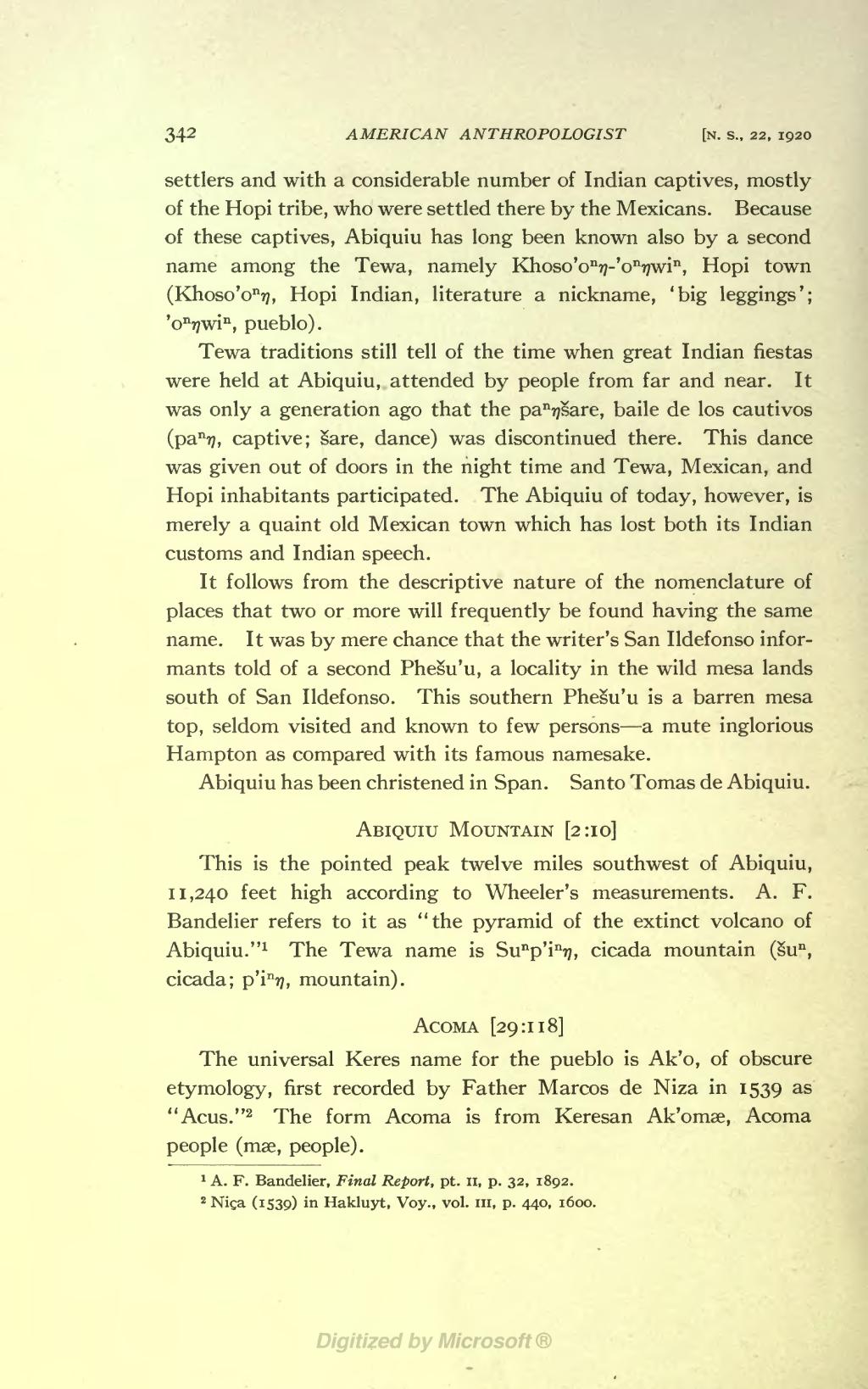34 2 AMERICAN ANTHROPOLOGIST [N. s., 22, 1920
settlers and with a considerable number of Indian captives, mostly of the Hopi tribe, who were settled there by the Mexicans. Because of these captives, Abiquiu has long been known also by a second name among the Tewa, namely Khoso'o n r/-'o n r7wi n , Hopi town (Khoso'o n ?7, Hopi Indian, literature a nickname, 'big leggings'; 'o n 7?wi n , pueblo).
Tewa traditions still tell of the time when great Indian fiestas were held at Abiquiu, attended by people from far and near. It was only a generation ago that the pa^sare, baile de los cautivos (pa 11 ?;, captive; sare, dance) was discontinued there. This dance was given out of doors in the night time and Tewa, Mexican, and Hopi inhabitants participated. The Abiquiu of today, however, is merely a quaint old Mexican town which has lost both its Indian customs and Indian speech.
It follows from the descriptive nature of the nomenclature of places that two or more will frequently be found having the same name. It was by mere chance that the writer's San Ildefonso infor- mants told of a second Phesu'u, a locality in the wild mesa lands south of San Ildefonso. This southern Phesu'u is a barren mesa top, seldom visited and known to few persons a mute inglorious Hampton as compared with its famous namesake.
Abiquiu has been christened in Span. Santo Tomas de Abiquiu.
ABIQUIU MOUNTAIN [2:10]
This is the pointed peak twelve miles southwest of Abiquiu, 11,240 feet high according to Wheeler's measurements. A. F. Bandelier refers to it as "the pyramid of the extinct volcano of Abiquiu." 1 The Tewa name is Su n p'i n r;, cicada mountain (su n , cicada; p'i n i7, mountain).
ACOMA [29:118]
The universal Keres name for the pueblo is Ak'o, of obscure etymology, first recorded by Father Marcos de Niza in 1539 as "Acus." 2 The form Acoma is from Keresan Ak'omse, Acoma people (mse, people).
1 A. F. Bandelier, Final Report, pt. n, p. 32, 1892.
2 Niga (1539) in Hakluyt, Voy., vol. in, p. 440, 1600.
�� �
